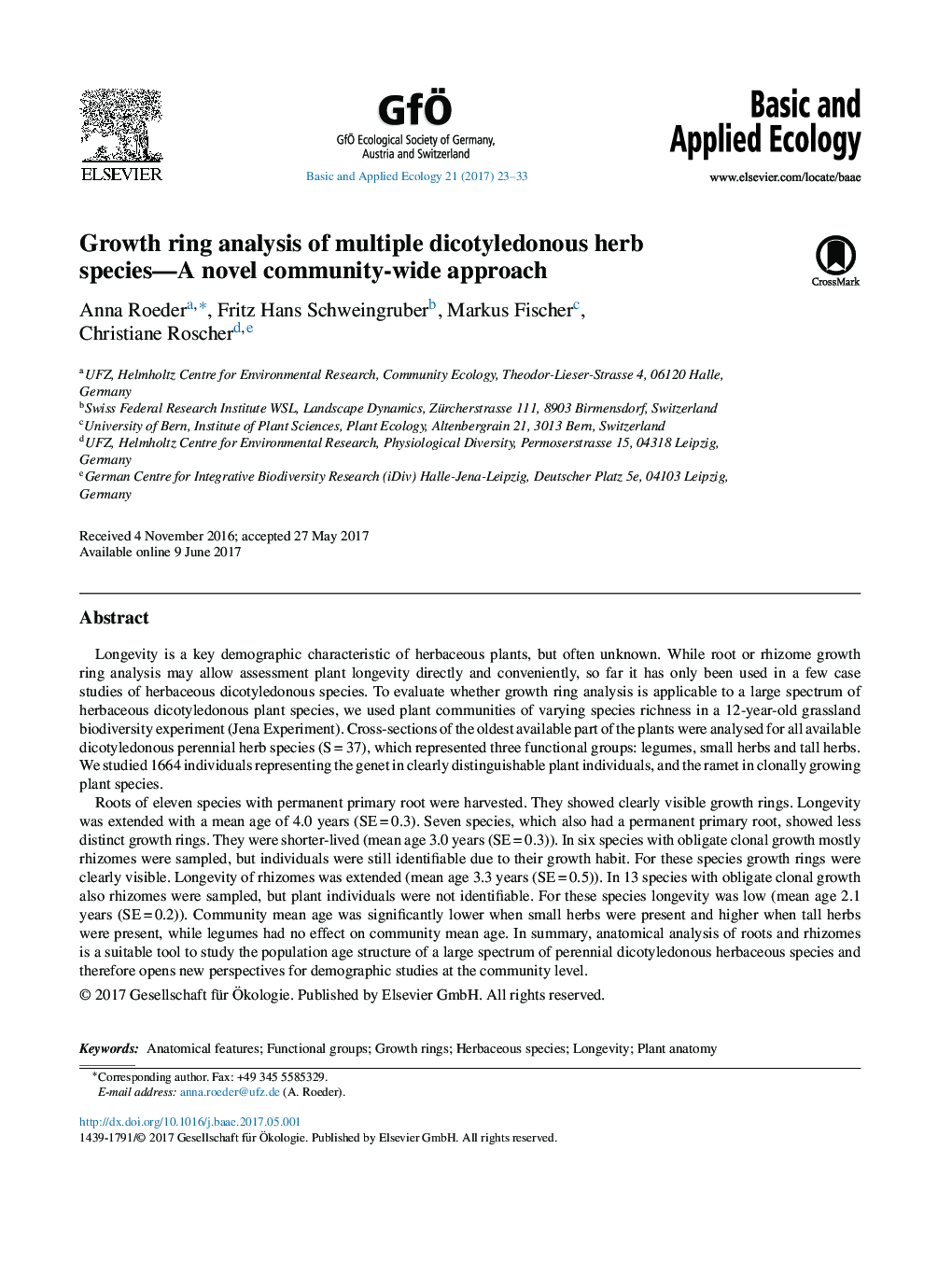| Article ID | Journal | Published Year | Pages | File Type |
|---|---|---|---|---|
| 5742821 | Basic and Applied Ecology | 2017 | 11 Pages |
Longevity is a key demographic characteristic of herbaceous plants, but often unknown. While root or rhizome growth ring analysis may allow assessment plant longevity directly and conveniently, so far it has only been used in a few case studies of herbaceous dicotyledonous species. To evaluate whether growth ring analysis is applicable to a large spectrum of herbaceous dicotyledonous plant species, we used plant communities of varying species richness in a 12-year-old grassland biodiversity experiment (Jena Experiment). Cross-sections of the oldest available part of the plants were analysed for all available dicotyledonous perennial herb species (SÂ =Â 37), which represented three functional groups: legumes, small herbs and tall herbs. We studied 1664 individuals representing the genet in clearly distinguishable plant individuals, and the ramet in clonally growing plant species.Roots of eleven species with permanent primary root were harvested. They showed clearly visible growth rings. Longevity was extended with a mean age of 4.0 years (SEÂ =Â 0.3). Seven species, which also had a permanent primary root, showed less distinct growth rings. They were shorter-lived (mean age 3.0 years (SEÂ =Â 0.3)). In six species with obligate clonal growth mostly rhizomes were sampled, but individuals were still identifiable due to their growth habit. For these species growth rings were clearly visible. Longevity of rhizomes was extended (mean age 3.3 years (SEÂ =Â 0.5)). In 13 species with obligate clonal growth also rhizomes were sampled, but plant individuals were not identifiable. For these species longevity was low (mean age 2.1 years (SEÂ =Â 0.2)). Community mean age was significantly lower when small herbs were present and higher when tall herbs were present, while legumes had no effect on community mean age. In summary, anatomical analysis of roots and rhizomes is a suitable tool to study the population age structure of a large spectrum of perennial dicotyledonous herbaceous species and therefore opens new perspectives for demographic studies at the community level.
Graphical abstractDownload high-res image (282KB)Download full-size image
